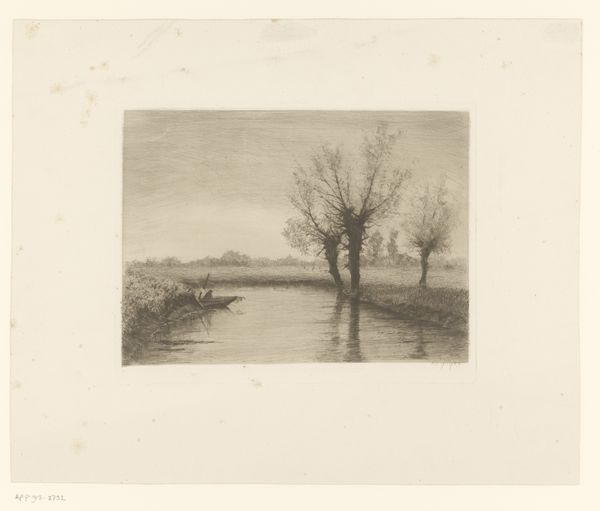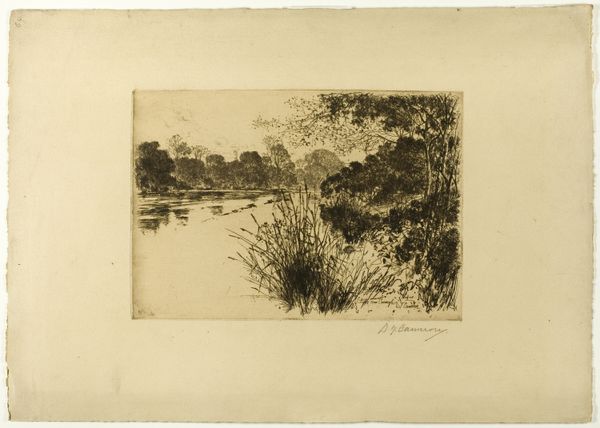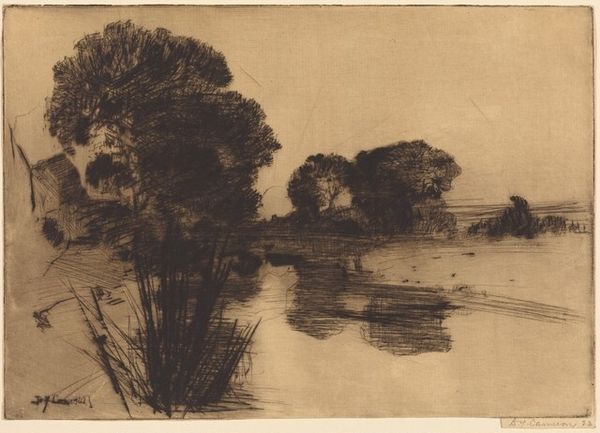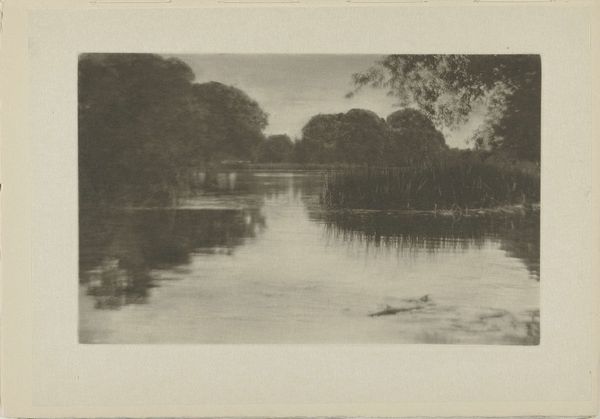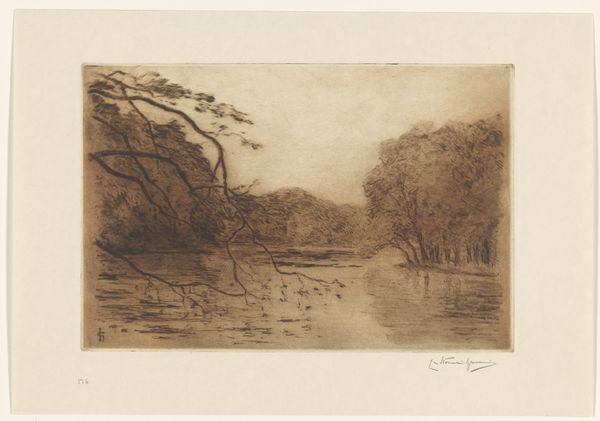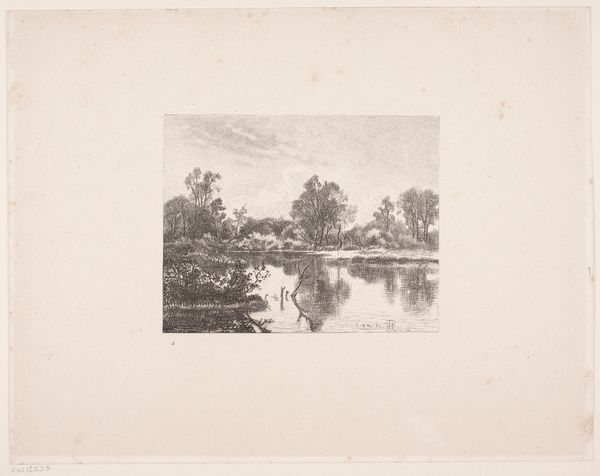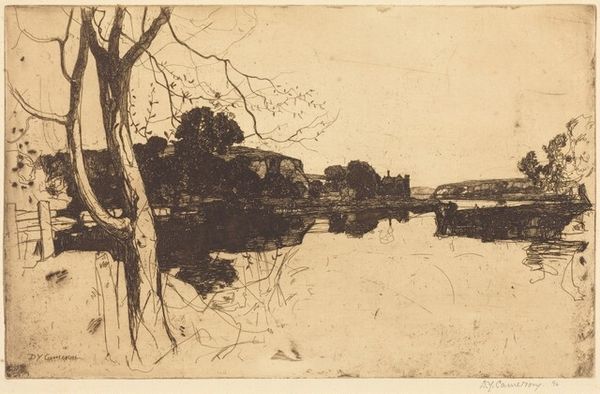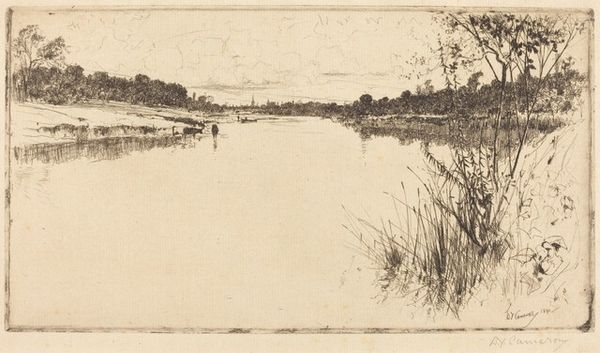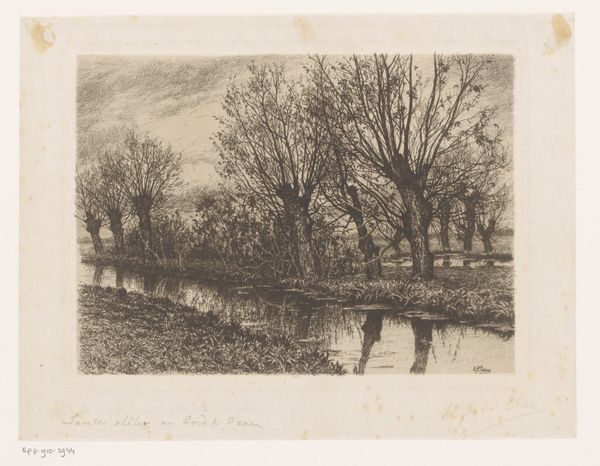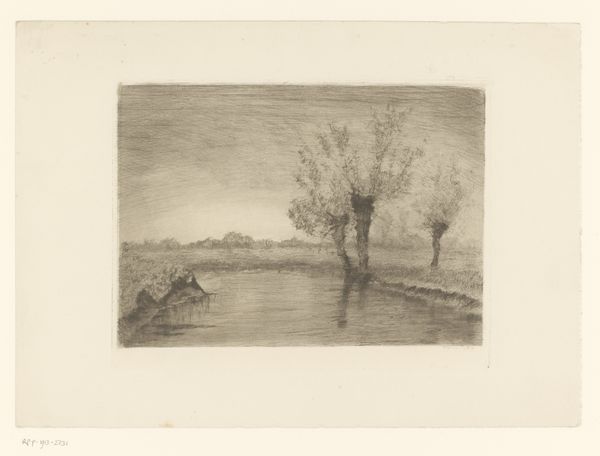
drawing, print, etching, paper
#
drawing
# print
#
etching
#
landscape
#
paper
Dimensions: 176 × 305 mm (image/plate); 230 × 355 mm (sheet)
Copyright: Public Domain
Curator: The way the light just hangs over that still water... it feels almost timeless, doesn't it? Editor: It does. There's a certain stillness to this image, yet I'm also conscious of the socioeconomic narratives embedded within the Scottish landscape itself. Curator: You always bring it back to the big picture! This is "The Vale of Clyde," an etching by David Young Cameron from 1898. The Art Institute of Chicago holds it, you know. Editor: I appreciate the composition; the reflections on the water create a compelling visual echo. But the Vale of Clyde wasn’t always a peaceful scene. Industrialisation and urban expansion drastically changed the landscape by the late 19th century. Was Cameron commenting on this alteration? Curator: Maybe he was just finding beauty amidst the changing landscape, offering a tranquil moment. Though, it's interesting how he's chosen to focus on these very still and somewhat romantic natural elements. The trees on the right feel like they're reaching up for the last bit of light. Editor: Perhaps his choices reflect the desire to romanticize a space that was rapidly transforming due to capitalism's expansion and the exploitation of both land and labour. These landscapes often conceal histories of displacement and dispossession. The serene facade hides the violence of industrial progress. Curator: So, in choosing this view, is Cameron actively participating in some form of escapism, you think? I see your point, and it could well be part of the appeal at the time—to turn away, at least in art, from all the upheaval. Editor: Precisely. His artistry provides not just an aesthetic experience, but a critical historical document about landscape and memory. By representing the Vale in this almost dreamlike manner, Cameron either ignores, or perhaps softens, a brutal truth about environment and society. Curator: I'm always drawn to art as an expression of hope, a quiet corner where beauty persists even when the world is a mess. Editor: I think there's also merit in exploring art as a testament to how systems of power often sanitize and romanticize harsh truths, especially about nature, labour, and the political motivations inherent within their interactions.
Comments
No comments
Be the first to comment and join the conversation on the ultimate creative platform.
